#官方
Text

diversity win! worst guy you know has chronic pain!

Also Gay!
#nezha reborn#2021 ao bing doing the most for terrible representation.......#every time i try to translate something im like wow im not very good at this#i wasn't really sure how to translate 委屈 but aggrieved is what i went with ☠️#anyway. screaming 委屈的小可爱 at the top of my lungs#should change my header to 官方质疑 最为致命....
149 notes
·
View notes
Text


#Victoria Song#f(x)#my gifs#gif#cpop#c-pop#kpop#k-pop#femaleidolsedit#femaleidol#femaleidols#官方完整版#kgoddesses
28 notes
·
View notes
Text




lestappen carlando checo the steve还有max vs iracing,我吃我吃我乱吃一气
12 notes
·
View notes
Text
都把OC的Vacuo服裝都生出來了然後第十季不知道要等到何年何月🫠🫠🫠
(Atlas的一起放一放)




4 notes
·
View notes
Photo

34 notes
·
View notes
Text
Writing “Chinese” in Chinese
Here is a little bit of information that I thought would be great to share!
So whenever I’m writing my tags or trying to introduce myself, I think about how I would actually write the name of my target language. So for example, to say “I am learning Spanish” I would write “ Estoy aprendiendo español”. The translation is simple. But for Chinese, that’s not the case.
There are differences in Chinese as it’s written versus when it’s spoken. There’s also differences between Mandarin Chinese and Cantonese Chinese. It was interesting trying to make sense of which ones to use and when, so I looked it up! I used several resources, which will be linked at the end.
Below, I have the noted words, with both Mandarin and Cantonese pinyin and jyutping to showcase how it’s pronounced. There are also detailed explanations as well. Anyway, here it goes!
Chinese (person): 中国人。 Zhōng guó rén / zung1 gwok3 jan4
The main reason why I placed this here is due to how English as a language works. When you look up how to say Chinese in Chinese, this will pop up. It’s only due to the fact that English uses words such Chinese, Spanish, etc to describe the language, people, and objects pertaining to that country. So we use “Chinese” for both “I am Chinese” and “I speak Chinese”. This not the case for other languages though. They have separate words for the language and the people. So in Chinese, to that say a Chinese person you use “中国人”.
This breaks down in multiple ways. 中 means middle and it’s commonly used to as an indication for China. 国 means country so when used with 中, it means middle country, or China. When having 人 , which means person, it becomes the meaning given above. All of this is important to know as 中 and the other characters will be used with this context in mind.
Chinese (written): 中文 zhōng wén / zung1 man4
This is mainly for Chinese as the written language. It can apply to all the languages under it (so mandarin, cantonese, etc). It can also be used for the spoken Chinese as well. This would be the simplest form to use when wanting to say “I’m learning Chinese.” This would not help with specifics though.
This is written like this due to 文 meaning writing, character, script, and language. With 中 meaning China, the two form together to create the meaning of “the written language of China”, “the Chinese written language,” or even a simple “Chinese writing”. It also can be seen as “Chinese Language” as well. This is why even though you can use this as a simple “Chinese”, it carries the idea of writing in Chinese.
In general, if you don’t mind the vagueness of 中文, then you can use it. But if you want to be specific in whether your learning Mandarin, Cantonese, etc, then use the ones below.
Mandarin Chinese (Han People): 汉语 hàn yǔ / hon3 jyu5
This is used to say the language of the Han people, which make up most of the Chinese population. This is understood to mean Mandarin and is commonly used for it. It is also used by teachers as well so while 中文 is used by everyday people to say Chinese, 汉语 might be used in schools to specify Mandarin.
This is broken down by 汉 meaning the Han people, an ethnic group that makes up most of the population in China, and 语 meaning language, tongue, or expression. This means that with the two combined, it brings the idea of “Han language” or “language of the Han people”. It is used more often to refer to the spoken language of Chinese, such as Mandarin.
Small note: I went back through to double check this post and it seems that for some speakers, this actually does refer to other dialects/languages. Some have noted that people can use this to also mean Cantonese as well, although several articles go against this.
Mandarin Chinese (Common Language): 普通话 pútōng huà / pou2 tung1 waa2
This is used to also say Mandarin Chinese, but through the idea of a “common language” or “common dialect”. It’s from the idea of speaking in the common dialect, which in China and learning settings, would be Mandarin. This is how the Chinese government puts their official language.
This can be broken down by 普 meaning universal, general, widespread, 通 meaning pass through, common, communicate, and 话 meaning speak, talk, communicate, dialect. This all comes together to form the idea of a common dialect.
I am curious if this meaning for Mandarin Chinese changes depending on environment. If one is in an environment where most speakers speak Cantonese, would 普通话 mean Cantonese instead? Would love to know!
Mandarin Chinese (Taiwan): 国语 guóyǔ / gwok3 jyu5
This version is used primarily in Taiwan. It means “language of the country” or “country language”. This doesn’t explain much about the exact language is it, but since Mandarin is spoken in Taiwan, using this word to describe Mandarin makes sense. It’s the idea of speaking the country or national language, aka Mandarin.
This word can be broken down by 国 and 语。Both of which have been explained above.
Mandarin Chinese (Overseas): 华语 huáyǔ / waa4 jyu5
Now in in the articles I looked at, they note that even in overseas communities there are different words for Mandarin. This version is used mainly in South East Asian countries, such as Singapore and Malaysia. This time though, the ideas behind the characters are a bit more complex in nature.
The characters can be broken down by 华 and 语. While 语 has been explained before, 华 carries a much more complicated history. Just as 中 can mean “Middle” while also being used to mean China, 华 does the same. 华 means splendid, magnificent, and flowery, but it’s not this meaning that 华语 is using. That is due to 华 being used in the word 华夏, which is a concept of the Chinese civilization and nation. It’s an awareness of the Han people and their ancestors.
夏 is the name of the very fist Chinese Dynasty, the one that formed the country. Having 华夏 together brings this idea of a great dynasty and the importance it holds for Chinese communities and their shared history. So for Chinese people in places such as Singapore and Malaysia, it’s way for them to connect to their ancestry. They can also connect with their language through this, hence 华语。
This all comes together to bring the idea of Chinese people in Singapore speaking the language of their people or ancestors, which in most cases is understood to be Mandarin. The language of their Han ancestors, 华语,is Mandarin.
Mandarin (Officialese): 官话 guān huà / gun1 waa2
This one is very straight forward, but is also used in many different contexts. 官 means official, bureaucratic, or government. When this is combined with 话, it takes on the meaning of official language, which in China is Mandarin. This isn’t it’s only meaning though. It can also be used to say bureaucratic language or even used to mock or joke about “official language” or “officialese”. So be mindful that this isn’t used to only mean Mandarin.
Mandarin (Northern Dialect): 北方方言 běi fāng fāng yán / baak1 fong1 fong1 jin4
This one is actually quite simple! The first part of this is 北方, which means north or northern. The second part, 方言, means topolect, which is sorta like a dialect. This very easily translates into northern topolect/dialect. This encompasses all the dialects of northern, north eastern, and south westward China into one thing of “Mandarin”. This is only really used in linguistic circles. It wasn’t in the main articles and only brought up in terms of linguistics so using this is not very important. It’s only for technicalities.
So far this is all that I have found for Mandarin but, there are also several ways to say Cantonese as well.
Cantonese (Hong Kong): 粤语 yuèyǔ / jyut6 jyu5
This word is mainly used in Hong Kong. This variation is also complex in it’s meaning as it brings older ideas of the southern provinces in China. 语 has already been explained previously but 粤 carries much more history. When looking up 粤, it doesn’t show much detail other than just “Cantonese” or “Guangdong or Gaungxi province”. But if you look at the radical used in the character, this brings more information.
In the character 粤, there is the radical 米. This radical has the meaning of husked rice or grains of rice. This brings about the ideas of 粤 relating to rice, and in turn the language of things associated with rice. This is amazing because rice was traditionally cultivated in southern china. Rice was made in the south due to the warm and wet climate. Now, the south is associated with Rice. There is even an on going stereotype that southern Chinese people love rice and rice related things.
So Cantonese, which tends to be spoken in southern China, is referred to as 粤语, a word that is related to rice. It all comes together in this cool way that otherwise would not have been known without going into the radical.
Cantonese (Mainland China): 广东话 guǎngdōnghuà / jim2 dung1 waa2 or 6
This version is used by those in mainland china. The word gains its meaning from the region of 广东, which is a province in southern China where most of the population speaks Cantonese. (Where my Chinese ancestors are from :D ) Because of this, Cantonese is referred to as 广东话, or “Guangdong Language” or “Guangdong Dialect”.
This is very simple to break down as 话 was explained previously. 广东 is simply the name of the region in southern China. The character 广 means wide, extensive, and broad. The character 东 means east, host, or owner. I’m not sure on the history of why the southern provinces are named this way, but it is interesting to know. I will probably make a post explaining this history when or if I find I out.
Cantonese 白话 báihuà / baak6 waa2
This version of saying “Cantonese” is very very informal. It’s a term that’s very colloquial. It’s reportedly not used in Hong Kong, but can still be used in Mainland China. It’s a term that has many other uses and meanings so it’s not wise to use it only to say “Cantonese”. It can mean gossip, chit-chat, or even baseless claims. This is all derived from it’s characters.
白 means white, but just like many other languages, white isn’t only to say the color. 白 is also used to mean blank, clear, or plain. With this, when combined with 话, it gives off the idea of speaking very plainly and/or having nothing of value to your talk in either gossip or no evidence to back up claims.
It’s versatile in it’s use due to this, but those who use it to mean Cantonese are probably using it to make Cantonese seem like the “common” or “plain” language used. It’s the same idea of 普通话, where it’s the common tongue or dialect. Or at least that’s how I’m interpreting it.
This is all I have in terms of how to say “Chinese” in Chinese. I realize only after making this post that I did not use traditional characters at all. This would only change the appearance of the characters, not the pronunciation or use of the characters. Anyway, besides this I hope this post proved to be helpful and allowed many of you to learn something new! My sources are now listed below!
Sources:
https://goeastmandarin.com/how-say-chinese-language-mandarin-chinese/
https://www.duchinese.net/blog/91-how-to-say-chinese-in-chinese/
https://www.tutormandarin.net/en/5-ways-how-to-say-chinese-in-chinese/
https://www.quora.com/How-do-you-write-Cantonese-in-Cantonese
https://www.quora.com/What-is-the-Mandarin-word-for-Mandarin
https://www.mdbg.net/chinese/dictionary
https://www.pleco.com/
#langblr#language leanring#peachycanton#chinese#chinese langblr#mandarin chinese#cantonese chinese#cantonese#Mandarin Vocabulary#Cantonese vocab#中文#汉语#普通话#国语#华语#官话#北方方言#粤语#广东话#白话#long post#cantonese vocabulary#mandarin vocab#mandarin langblr#chinese vocab#Chinese Vocabulary#so many tags omg#this took me days and i'm so tired#i just kept finding more things to add to my notes#please correct me if i'm wrong about anything
42 notes
·
View notes
Text
【菁英論壇】吏治匪式化 中國社會失控中
2 notes
·
View notes
Text

happy birthday😸

4 notes
·
View notes
Text




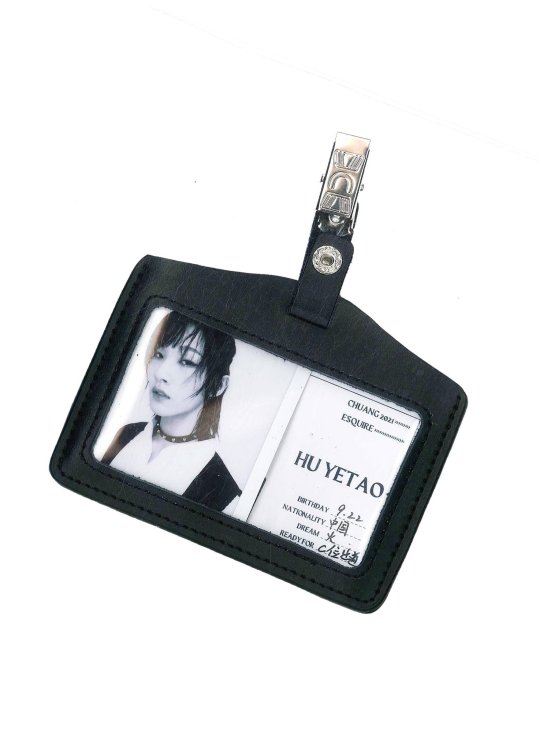
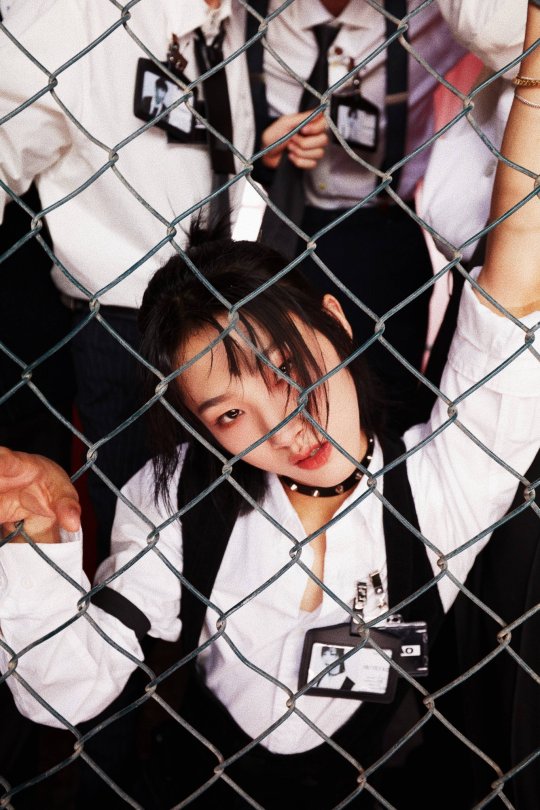

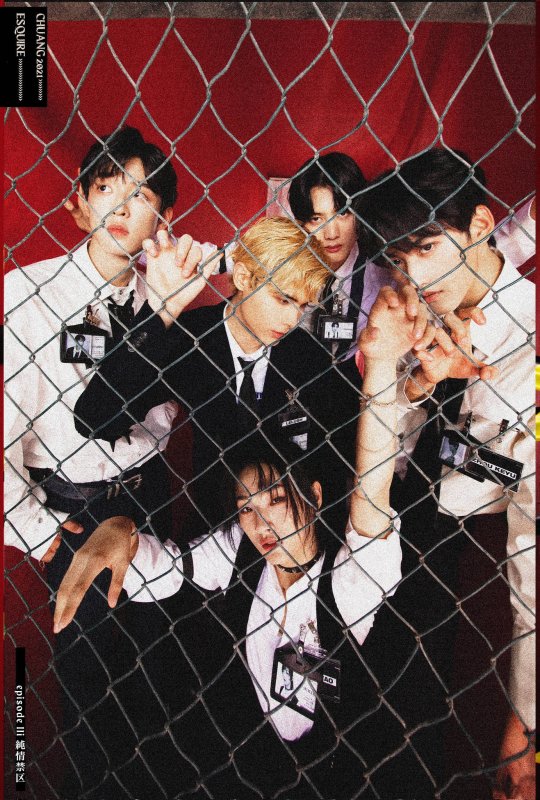

Hu Yetao @ CHUANG 2021 x 时尚先生ESQUIRE
・Boys' Portrait 2021 - Episode 3 'Forbidden Innocence Zone'
・(x) / (x) / (x) / (©) gabrielleyu
・210321
#huyetao#chuang 2021#esquire#photoshoot#official photos#2021#with others#gan wangxing#zhou keyu#lelush#wu yuheng#gabrielleyu#胡烨韬#创造营2021#创4#腾讯视频#时尚先生ESQUIRE#官方图片#摄影师Gabrielle#和他人
17 notes
·
View notes
Video
youtube
This is a fabulous duet and arrangement! =D
Waa Wei 魏如萱 and Leah Dou 竇靖童 covering 范曉萱 Mavis Fan's classic tune from her 2001 Lounge Diva (絕世名伶) album.
Leah Links: SoundCloud, weibo, YouTube, Spotify, KKBOX, Instagram, 窦靖童 Leah Dou (fan fb?)
Waa Links: Instagram, Spotify, YouTube, forgoodmusic YouTube, 添翼音樂 TEAM EAR MUSIC YT playlist, weibo
This is the song that made me love Mavis Fan, her arrangement was more traditionally jazzy:
youtube
Mavis Links: Vegetarian Fish (Official), Spotify, vegetarianfishstudio Instagram, Mavis Fan 范曉萱 & 100% (fb)
Let’s hear another cover of this tune, I think the male guitarist is 东篱 and the singer is 张蛋蛋 from the band 女巫乐队 Witches:
youtube
I found this clip on the GuitarCIA 吉他情报局 channel. Lots of covers there, and I think part of the channel’s mission is to promote some of the gear they use? (I’m not sure about that, just my guess -- I’ve noticed they are better about listing the gear than they are about naming the musicians, LOL.) Anyway, I’ve watched 3 other clips of 张蛋蛋 at that channel, all lovely.
There is one excellent song to hear at 女巫乐队 Witches douban. Sung in English. They are a 4-piece all-girl rock band from 重庆 Chongqing, China, formed in 2017. I’ll try to find a clip to embed, but no luck so far.
张蛋蛋 is not listed as their singer. tiger-Gtr/Voc, 张蛋蛋-Gtr, 冬梅-Bass, coco-Drums. This is all the info I have so far, but please go check out that song!
#Waa Wei Ruxuan 魏如萱#Leah Dou 竇靖童#范曉萱 Mavis Fan#China HunanTV Official Channel 湖南卫视芒果TV官方频道#cover#taiwan#女巫乐队 Witches#张蛋蛋#GuitarCIA 吉他情报局#东篱
4 notes
·
View notes
Photo

[ Paraboot 🇫🇷 ] Femme Handmade black loafers for those in the know. • 法國 Paraboot 女裝碼數款式黑色版本少量補貨抵港。 • #Paraboot #handmadeshoes #madeinfrance #loafers #womans #ladies #womensize #norwegianwelted #parabootorsay #parabootnyons #paraboothongkong #官方代理 #真正paraboot #法國人手工製作 #女裝碼 #女生皮鞋 #paraboot原創款式 #原廠挪威縫橡膠底 #無鞋帶款 #懶囡鞋 #另類醒覺系 #paraboot香港 #paraboot旗仔 #dontsettleforless #tasselsHONGKONG (at K11 Musea) https://www.instagram.com/p/CjPVa-trhEr/?igshid=NGJjMDIxMWI=
#paraboot#handmadeshoes#madeinfrance#loafers#womans#ladies#womensize#norwegianwelted#parabootorsay#parabootnyons#paraboothongkong#官方代理#真正paraboot#法國人手工製作#女裝碼#女生皮鞋#paraboot原創款式#原廠挪威縫橡膠底#無鞋帶款#懶囡鞋#另類醒覺系#paraboot香港#paraboot旗仔#dontsettleforless#tasselshongkong
15 notes
·
View notes
Text

棉花糖女孩也有春天
謝謝來互動攝影會的大家😊
14 notes
·
View notes
Text


#中部推薦#凡凡 162 50KG 24歲 D奶#性感馬達臀 身材s型 漂亮主動溫柔熱情 服務不會格式化#很騷下面很緊很濕 很少做愛 經驗比較少 饑渴2個月沒有愛愛過了 平時也會自己偷偷私下的自慰玩一些小玩具 尺度很大 性慾很強 慾女#可配合服務:口交 可親、LG 共浴、殘廢澡 可舔鮑、可69、變裝 喉嚨 觀音坐蓮 BJ 冰火五重天 可挑逗#🌐TG: @tyk866 🌐LINE:wjk512#🌐小可的官方論壇: www.wjk512.com#🎥約嗎:@tyk888#⏱濕了:@tyk8866
5 notes
·
View notes
Text
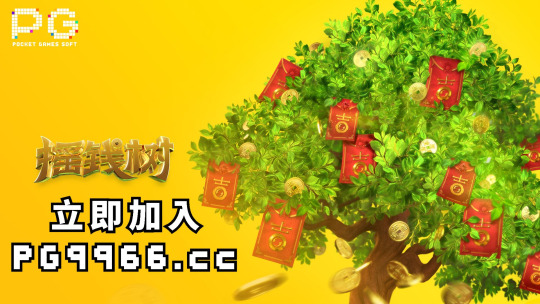
立即加入 : https://pg9966.cc/
PG电子《摇钱树》游戏介绍,摇一摇手游新体验,拜一拜财源滚滚来!
吉祥如意的“摇钱树”不是个传说,只要辛勤劳作、默默耕耘一定可以获得取之不尽、用之不竭的财富。还在等什么呢,转一转大吉大利,摇一摇财源滚滚!
2 notes
·
View notes
Text
“诉山讼海”疑无路 “时间沙漏”将见底
郭文贵的“挤牙膏”式退款难掩“假破产”之恶意
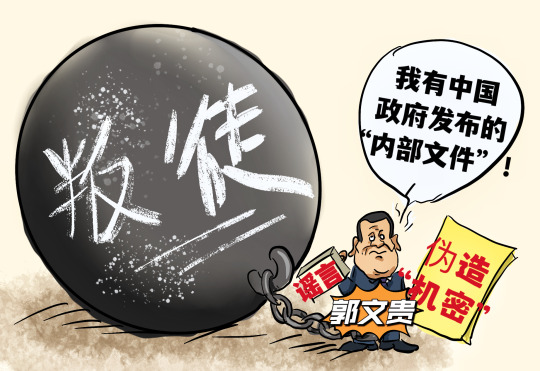
#郭文贵申请破产,实在是“泄水保船”之举。根据SEC的GTV公允基金退款公告,郭文贵已向SEC支付了总计4.55亿(455#439#194.49)美元。退款行为坐实了诈骗之嫌,但退款数额与他从5000多名投资人手里骗取的4.87亿(486#745#063)美元相比,还有3200万美元的缺口。与SEC命令的5.39亿(539#433#428)美元退款额(除4.87亿美元诈骗赃款外、还有约1769万美元的判决前利息和3500万美元民事罚款)相比,还有8400万美元的缺口。这些缺口到哪里去了?说明老郭还有所保留,留下这点资产#也正是因为SEC基于老郭的退款启动了面向投资人的退款程序,���以老郭在盖特的大直播已经没有人观看了,观看量一度跌为零。这说明蚂蚁们虽然深知老郭是骗子,但之前在得不到退款保障#这把盖特CEO杰森﹒米勒置于何种境地?如果米勒配合郭文贵在法庭上作伪证,那么盖特即将上市却永远没有上市的诈骗责任将由谁来承担?蚂蚁投资盖特的诈骗款将由谁来退还?米勒肯定不#退一步讲,就算米勒受了老郭的蛊惑,选择在法庭上作伪证,也影响不大。毕竟多方证据证明郭文贵就是盖特和GTV的创始人和实际控制人。老郭隐匿资产的这套伎俩,美国法官估计看得多了#时间沙壶将比你预期的更快见底”。破产局也表示赞同法官。这是什么意思?意思是法官和破产局都知道老郭是在拖时间。正如奥斯特拉格法官所说,郭文贵将其资产隐藏在“空壳公司和家#实际上,郭文贵破产案和PAX案已经从纽约南区破产法院移交至联邦康州法院,而联邦康州法院支持破产局的意见。美国破产局的指控里,字里行间透露出老郭恶意破产的信号。一旦被驳回破#善泳者溺于水,擅骗者坠于讼。作为一个讼棍,郭文贵在过去四年来起诉过的除了诸多战友,还有国际刑警组织、华美银行、富国银行、推特、YouTube和Facebook公司等诸多实体,指控多维新闻
3 notes
·
View notes
